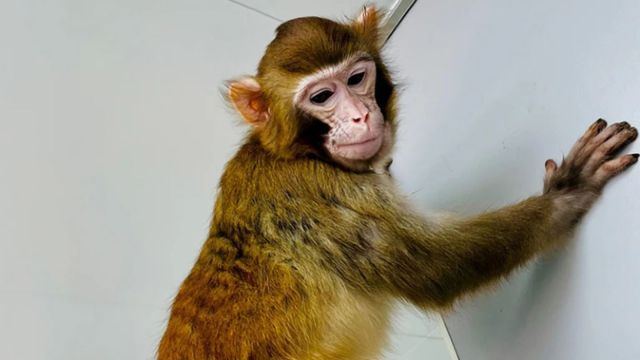- India
- International
Cloned rhesus monkey reaches adulthood for the first time: His name is ReTro
Scientist say they have cloned a rhesus macaque for the first time and it has survived to adulthood.
 ReTro is a healthy two-year-old rhesus macaque. (Qiang Sun via Nature Communications)
ReTro is a healthy two-year-old rhesus macaque. (Qiang Sun via Nature Communications)Chinese scientists on Tuesday announced that they have cloned a Rhesus monkey that lived to adulthood. Two-year-old ReTro has made it to adulthood and this is the first time the species has been cloned.
The scientists created ReTro using a slightly modified version of the approach used to create Dolly the Sheep and other mammals like the long-tailed macaque, which was the first primate to be cloned. They replaced the placenta of the cloned embryo with that produced by a different kind of embryo to reduce developmental issues that can affect survival while using fewer embryos and surrogate animals, according to CBS News.
The scientists believe that this new technique could be used to produce cloned primates that can be used in drug testing and behavioural research. “We could produce a large number of genetically uniform monkeys that can be used for drug-efficacy tests,” said Mu-ming Poo, director of the Institute of Neuroscience in the Chinese Academy of Sciences in Shanghai, to Nature.
The usual technique for cloning, used for Dolly and others, is called somatic cell nuclear transfer (SCNT). With this technique, the nucleus of a body cell is transferred into an egg cell whose nucleus has been removed. However, this usually results in extremely low birth and survival rates for cloned embryos, according to Scientific American.
Failure was especially prevalent when it came to cloning primates. Researchers cloned long-tailed macaques in 2018. At that time, they made 109 cloned embryos and implanted nearly three-quarters of them into 21 surrogate monkeys. But this only resulted in six pregnancies and just two of the monkeys survived birth.

To solve this low rate of success, the researchers developed a technique where they replaced the SCNT “trophoblast,” the outer layer of cells in a developing embryo, with that from ICSI embryos. Trophoblasts later form a major part of the placenta. Because of this, the embryos developed a “natural placenta,” according to Zhen Liu, coauthor of the study published in the journal Nature. Liu is a neuroscientist at the Chinese Academy of Sciences. Of course, the foetus itself is still a clone.
More Tech
May 17: Latest News
- 01
- 02
- 03
- 04
- 05






























